Visit Heritage
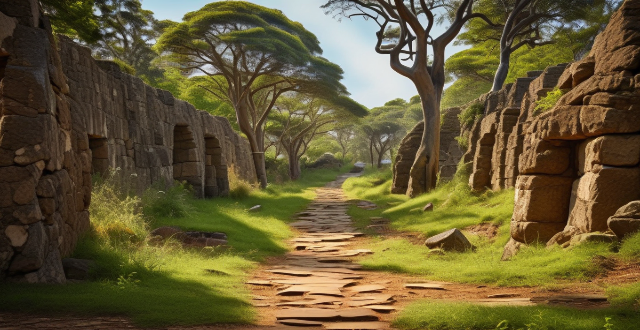
How can I make the most of my visit to a heritage site ?
Heritage sites are places that have cultural, historical, or natural significance. To make the most of your visit to a heritage site, you need to plan ahead, be prepared, and engage with the site in meaningful ways. This guide explores tips and strategies for preparation, on-site experience, and post-visit reflection. By following these tips, you can have a meaningful and enriching experience that enhances your understanding and appreciation of the heritage site.

What is the best time of year to visit heritage sites ?
The best time to visit heritage sites is often during the shoulder seasons of spring and autumn, offering mild weather, fewer crowds, and vibrant flora. Spring brings blooming gardens and natural landscapes while autumn showcases fall foliage. Summer, though peak tourist season with longer daylight hours, can be hotter and more crowded. Winter provides a unique atmosphere with holiday events but requires proper clothing for cold weather. Shoulder seasons and weekdays generally offer less crowded experiences, and local events can enrich visits. Budget-wise, off-peak travel can save on costs. Ultimately, the ideal time depends on individual preferences for weather, crowds, and budget.
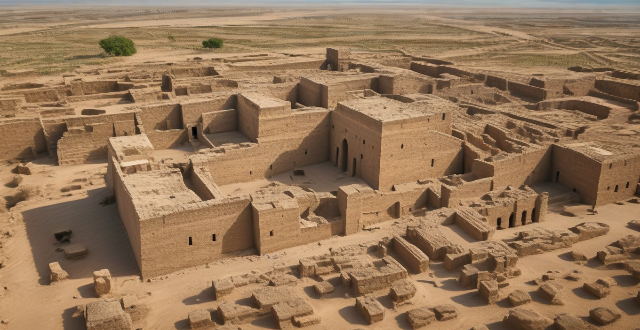
Can you recommend a heritage site that is off the beaten path ?
Qal'at al-Bahrain is a lesser-known heritage site located in Bahrain. It was once a thriving port city during the Dilmun period and played a significant role in ancient trade routes. The site has revealed numerous artifacts and structures that provide insights into the ancient civilization of Dilmun, including burial mounds, fortification walls, a dhow harbor, and a temple complex. Visiting Qal'at al-Bahrain offers several advantages over more popular heritage sites, such as fewer crowds, unique history, cultural experience, and scenic beauty.

What are the top heritage sites to visit in your country ?
China is home to many heritage sites that are worth visiting. Here are the top ones: 1. Great Wall of China - A series of fortifications built along an east-to-west line across the historical northern borders of China. 2. Forbidden City - A palace complex in the heart of Beijing, home to 24 emperors from the Ming and Qing dynasties. 3. Potala Palace - A palace complex in Lhasa, Tibet Autonomous Region, that served as the residence of the Dalai Lamas until 1959. 4. Terracotta Army - A collection of terracotta sculptures depicting the armies of Qin Shi Huang, the first Emperor of China. 5. Li River and Karst Mountains - Located in Guilin, Guangxi Zhuang Autonomous Region, known for its stunning natural beauty characterized by crystal-clear rivers and towering limestone peaks.

What are the benefits of visiting heritage sites ?
Visiting heritage sites offers a plethora of benefits that extend beyond mere sightseeing. These sites, often recognized for their cultural, historical, or natural significance, provide a unique opportunity to connect with the past and learn about different cultures and environments. Here are some of the key advantages of exploring these treasures: ### 1. **Educational Opportunities** Heritage sites serve as open-air classrooms where visitors can gain firsthand knowledge about history, architecture, art, and nature. They offer a tangible connection to the past, allowing people to understand how societies have evolved over time. #### Key Takeaways: - **Historical Context**: Learn about significant events and periods by visiting the actual locations where they occurred. - **Cultural Insights**: Understand the customs, traditions, and way of life of different civilizations. - **Environmental Learning**: Natural heritage sites teach about ecosystems, biodiversity, and geological formations. ### 2. **Cultural Preservation** By visiting these sites, travelers contribute to the preservation of cultural heritage. The revenue generated from tourism can be used to maintain and protect these places for future generations. #### Importance: - **Support Conservation**: Financial support through visitor fees aids in restoration and maintenance projects. - **Raise Awareness**: Increase public consciousness about the importance of preserving our shared heritage. ### 3. **Economic Benefits** Heritage tourism boosts local economies by creating jobs, supporting small businesses, and promoting regional development. #### Economic Impact: - **Job Creation**: From site management to hospitality services, heritage sites create employment opportunities. - **Local Businesses**: Local artisans, guides, and restaurants benefit from increased visitor traffic. ### 4. **Personal Enrichment** Exploring heritage sites can be a profoundly enriching experience that broadens one's perspectives and fosters appreciation for different cultures and histories. #### Personal Growth: - **Broadened Horizons**: Understand diverse ways of life and appreciate the beauty of cultural diversity. - **Reflection and Inspiration**: Reflect on human achievements and find inspiration in the creativity and resilience of past societies. ### 5. **Entertainment and Leisure** Beyond educational and cultural benefits, visiting heritage sites is also an enjoyable leisure activity that allows individuals and families to spend quality time together while engaging in a meaningful activity. #### Fun Facts: - **Family-Friendly**: Many sites offer activities and tours tailored for families, making them great for vacations. - **Photography**: Heritage sites often provide stunning visual experiences and photo opportunities. ### 6. **Sustainable Tourism** Many heritage sites are part of sustainable tourism initiatives that aim to minimize environmental impact and ensure the long-term preservation of cultural and natural resources. #### Sustainability Efforts: - **Low-Impact Activities**: Encourage walking, cycling, or using public transport to reduce carbon footprints. - **Eco-friendly Practices**: Some sites implement green practices like recycling, water conservation, and waste reduction.

What is the best time of year to visit Africa for an adventure trip ?
The best times to visit Africa for an adventure trip vary by region and activity. East African countries like Kenya, Tanzania, and Uganda are best visited from June to October during the dry season, ideal for safaris and hiking. Southern Africa, including South Africa, Botswana, Zambia, and Zimbabwe, is suitable for visits from May to September, offering great opportunities for safaris and water sports. West Africa, encompassing Ghana, Nigeria, and Senegal, is recommended from November to February for historical tours, cultural experiences, and beach relaxation. Overall, the dry season from May to October is generally considered the best time for outdoor activities across most of Africa.

What measures are taken to protect and preserve heritage sites for future generations ?
Heritage sites are invaluable treasures that provide insight into the history, culture, and traditions of a community or civilization. It is essential to protect and preserve these sites for future generations to appreciate and learn from. Here are some measures taken to safeguard heritage sites: 1. Legislation and Policies 2. Conservation and Restoration 3. Community Involvement and Education 4. Research and Documentation 5. Security Measures 6. Sustainable Tourism Practices

How can I learn more about the history and culture of a heritage site before visiting ?
This text offers detailed steps on how to enrich your knowledge before visiting heritage sites. It suggests reading books and articles, utilizing online resources, listening to podcasts and audio tours, visiting museum exhibits, connecting with local contacts, and accessing academic papers and research. The goal is to appreciate the site's historical context and cultural significance, making the visit more meaningful.

What are the best times of year to visit popular island destinations ?
Visiting popular island destinations can be a dream come true for many travelers. However, the experience can vary greatly depending on the time of year you choose to go. Here are some tips on the best times to visit popular island destinations: ## **Hawaii** - ### **Best Time to Visit** The best time to visit Hawaii is during the summer months (June to August) when the weather is warm and sunny. This is also the peak season, so expect higher prices and larger crowds. - ### **Things to Do** During your visit, don't miss out on hiking to Diamond Head State Monument, visiting Pearl Harbor National Memorial, or taking a surfing lesson at Waikiki Beach. - ### **What to Pack** Pack light and comfortable clothing, sunscreen, sunglasses, and a hat. Don't forget your swimsuit and flip flops too! ## **Maldives** - ### **Best Time to Visit** The best time to visit the Maldives is from December to April when it's dry season and the weather is sunny and warm. - ### **Things to Do** While in the Maldives, make sure to go snorkeling or diving in the crystal-clear waters, relax on one of the many beautiful beaches, or take a boat trip to explore the nearby islands. - ### **What to Pack** Pack light and airy clothes, sunscreen, sunglasses, and a hat. Don't forget your swimsuit and flip flops too! ## **Bali (Indonesia)** - ### **Best Time to Visit** The best time to visit Bali is between May and September when it's dry season and the weather is sunny and warm. - ### **Things to Do** While in Bali, make sure to visit the Tegalalang Rice Terrace, watch a traditional Balinese dance performance, or take a surfing lesson at Kuta Beach. - ### **What to Pack** Pack light and comfortable clothing, sunscreen, sunglasses, and a hat. Don't forget your swimsuit and flip flops too!

How often should I visit a sports rehabilitation center after an injury ?
The frequency of visits to a sports rehabilitation center after an injury depends on factors like the severity of the injury, individual healing capacity, and recommended treatment plan. Major injuries may require daily sessions initially, while minor injuries might need weekly visits. Individual healing rates also play a role, with some needing more time and support. The treatment plan outlines the recommended visit frequency and necessary interventions. Regular progress tracking helps determine if adjustments are needed. It's crucial to work closely with healthcare professionals for an effective rehabilitation process.

What are the best places to visit in Asia for nature lovers ?
Asia is a continent with diverse landscapes and natural wonders that offer an incredible experience for nature lovers. Here are some of the best places to visit in Asia for nature lovers: The Himalayas in Nepal is a paradise for trekkers and mountaineers. It is home to eight of the world's fourteen highest mountains, including Mount Everest. The region offers breathtaking views of snow-capped peaks, lush valleys, and cascading waterfalls. Some popular treks include the Annapurna Circuit, Langtang Valley Trek, and Everest Base Camp Trek. Yangshuo is a small town located in Guangxi Province, China. It is known for its stunning limestone karst formations, crystal-clear rivers, and picturesque countryside. Visitors can take a bamboo boat ride on the Li River, cycle through the countryside, or hike to the top of Moon Hill for panoramic views of the surrounding landscape. Bali is an island paradise in Indonesia that offers a unique blend of culture, beaches, and nature. It is home to several volcanic mountains, such as Mount Batur and Mount Agung, which offer challenging hikes with rewarding views. The island also has numerous rice terraces, waterfalls, and coral reefs that are perfect for snorkeling and diving. Jeju Island is a volcanic island off the southern coast of South Korea that is known for its beautiful beaches, hiking trails, and scenic landscapes. The island has several natural attractions, including Manjanggul Lava Tube, Cheonjiyeon Waterfall, and Hallasan Mountain, the highest peak in South Korea. Phong Nha-Ke Bang National Park is a UNESCO World Heritage Site located in central Vietnam. It is home to the largest cave in the world, Son Doong Cave, and several other impressive cave systems. The park also has lush forests, limestone mountains, and underground rivers that are perfect for kayaking and caving adventures. Zhangjiajie National Forest Park is located in Hunan Province, China. It is known for its towering sandstone pillars and steep cliffs that resemble those found in Avatar movie. The park also has several hiking trails, scenic viewpoints, and natural bridges that offer breathtaking views of the surrounding landscape. Khao Yai National Park is Thailand's third largest national park and a UNESCO World Heritage Site. It is home to diverse wildlife, including elephants, tigers, and gibbons. The park also has several hiking trails, waterfalls, and scenic viewpoints that offer stunning views of the surrounding landscape. Kinabalu Park is located on the island of Borneo in Malaysia. It is home to Mount Kinabalu, the highest peak in Southeast Asia. The park also has several hiking trails, including the challenging climb to the summit of Mount Kinabalu. Along the way, visitors can enjoy stunning views of the surrounding rainforest and wildlife.

What are some must-visit places for backpackers in Europe ?
The text provides a list of must-visit places for backpackers in Europe, including Berlin, Amsterdam, Paris, Barcelona, Prague, Cinque Terre, Scottish Highlands, Santorini, Interlaken, and Dubrovnik. Each destination offers unique experiences ranging from historical sites to natural beauty and cultural attractions. The summary highlights the diversity of Europe's offerings for backpackers seeking adventure, culture, or relaxation.
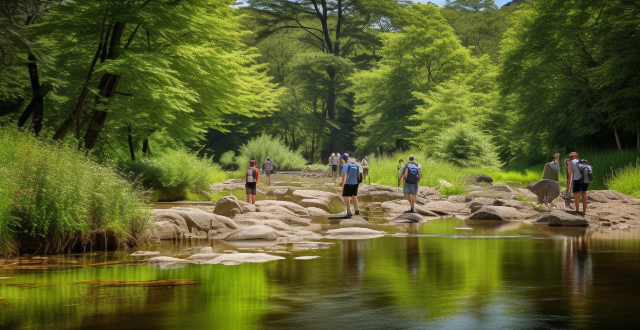
What are the top tourist attractions in Asia ?
The largest continent on Earth, Asia, is home to a plethora of diverse cultures, natural wonders, and man-made marvels. It boasts some of the most visited tourist attractions globally, catering to various interests from history and architecture to adventure and relaxation. The Great Wall of China, Taj Mahal, Angkor Wat, Forbidden City, Boracay Beach, Halong Bay, Fushimi Inari Shrine, and Gardens by the Bay are just a few of the top tourist attractions in Asia. These attractions represent just a fraction of the many fascinating places to visit in Asia. Each has its unique charm and historical significance, offering unforgettable experiences for travelers around the globe.

What are the must-visit romantic honeymoon destinations in Asia ?
Asia boasts numerous romantic honeymoon destinations perfect for couples seeking a blend of natural beauty, cultural experiences, and luxurious amenities. From the pristine beaches of Bali and Maldives to the historic temples of Kyoto and Siem Reap, each location offers unique experiences tailored for an unforgettable honeymoon. Other highlights include the volcanic landscapes of Jeju Island, the winter wonderland of Niseko, the cultural heart of Ubud, the northern Thai charm of Chiang Mai, and the scenic cruising opportunities in Ha Long Bay. These destinations ensure a honeymoon filled with love, relaxation, and adventure.

How does tourism impact local communities around heritage sites ?
Tourism has become an essential part of the global economy, and its impact on local communities around heritage sites is significant. The following sections will discuss the positive and negative effects of tourism on these communities. ## Positive Effects ### Economic Benefits 1. **Job Creation**: Tourism creates job opportunities for locals, such as tour guides, hotel staff, and restaurant workers. 2. **Income Generation**: Tourists spend money on local products and services, which boosts the economy. 3. **Infrastructure Development**: Improved roads, transportation systems, and communication networks are often developed to accommodate tourists. ### Cultural Preservation 1. **Heritage Conservation**: Tourism revenue can be used to preserve and maintain heritage sites. 2. **Cultural Exchange**: Interaction with tourists promotes cultural exchange and understanding. 3. **Traditional Arts and Crafts**: Tourists often purchase traditional arts and crafts, encouraging their preservation and promotion. ### Environmental Awareness 1. **Eco-Tourism**: Some tourists are interested in eco-friendly activities, promoting sustainable tourism practices. 2. **Conservation Efforts**: Tourism revenue can fund environmental conservation projects near heritage sites. ## Negative Effects ### Environmental Degradation 1. **Overcrowding**: Large numbers of tourists can lead to overcrowding and damage to fragile ecosystems. 2. **Pollution**: Increased traffic and waste production can contribute to pollution issues. 3. **Resource Depletion**: Overuse of resources like water and energy can strain local supplies. ### Cultural Disruption 1. **Commercialization**: The focus on tourism can lead to the commercialization of cultural experiences, diluting their authenticity. 2. **Loss of Traditions**: As locals adapt to tourist demands, some traditions may be lost or altered. 3. **Cultural Sensitivity Issues**: Tourists may not always respect local customs and practices, leading to tensions. ### Economic Disparities 1. **Leakage of Revenue**: Not all tourism revenue stays within the local community, especially if managed by external corporations. 2. **Unequal Distribution**: Benefits from tourism may not be evenly distributed among all members of the community. 3. **Dependency on Tourism**: Over-reliance on tourism can make local economies vulnerable to fluctuations in tourist numbers. ## Conclusion The impact of tourism on local communities around heritage sites is complex, with both positive and negative aspects. It is crucial for stakeholders to manage tourism responsibly to maximize benefits while minimizing harm to the environment, culture, and economy of these communities. By fostering sustainable tourism practices, we can ensure that future generations can also enjoy these valuable heritage sites and the unique cultures they represent.

How do you ensure sustainable tourism at heritage sites ?
To ensure sustainable tourism at heritage sites, it isTo ensure sustainable tourism at heritage sites, it is local communities about the importance of it is crucial to educate visitors and local communities about the importance of conservation, manage visitor impact through carrying capacity studies and timed entry systems, promote responsible tourism practices like sustainable transportation and waste management, support local economies by hiring local staff and promoting local products, collaborate with governments and organizations for funding and partnerships, regularly monitor and evaluate site conditions and management effectiveness, and preserve cultural integrity by offering authentic experiences and training staff in cultural sensitivity.

Can you suggest some must-visit spots on a European road trip ?
This text provides a list of must-visit spots on a European road trip, including iconic landmarks and hidden gems in Paris, Amsterdam, Berlin, Prague, and Rome. Each city offers unique experiences and attractions worth exploring, from the Eiffel Tower in Paris to the Colosseum in Rome. The text encourages readers to plan their route carefully and allow enough time to fully immerse themselves in each destination.

Which South American cities are known for their rich cultural heritage ?
South America boasts several cities known for their rich cultural heritage, including Rio de Janeiro with its Carnival celebrations and Sugarloaf Mountain, Buenos Aires as the birthplace of tango and home to the Colon Theater, Lima's historic center and culinary scene, Quito's well-preserved colonial architecture and local markets, Cusco and Machu Picchu's Incan ruins and Andean culture, and Santiago's bohemian Bellavista neighborhood and thriving arts scene.

What are the top attractions to visit during a weekend city tour ?
This guide highlights the top attractions to visit during a weekend city tour, including must-see landmarks like historical monuments and museums, natural wonders and parks, architectural marvels, cultural experiences, local cuisine and restaurants, shopping districts, music venues and concert halls, theatres and performances, and bars and clubs. Each category offers a diverse range of options across various cities worldwide, ensuring an enjoyable and memorable experience for all types of travelers.
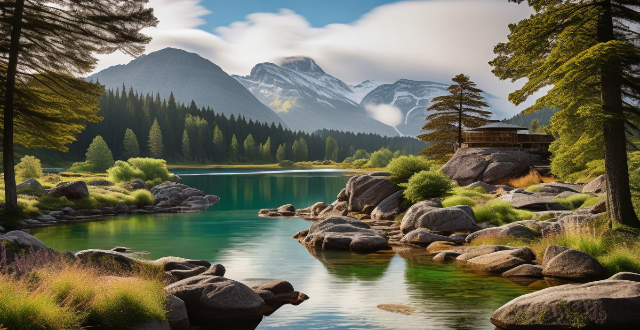
How do I find less crowded photography spots in popular tourist locations ?
To find less crowded photography spots in popular tourist locations, conduct research beforehand using Google Maps, social media, local blogs, and travel guides. Upon arrival, visit the tourist information center and ask locals for recommendations. Consider visiting during off-peak hours and look for alternative viewpoints or angles. Keep an eye on weather conditions and be flexible with your plans. During your visit, wake up early, stay out late, use long exposures, seek elevated positions, utilize natural barriers, be patient, and edit later if necessary.

How much does it cost to maintain a burglar alarm system ?
The article discusses the cost of maintaining a burglar alarm system, which includes the type of system (wired or wireless), level of monitoring required (self-monitoring, basic monitoring, advanced monitoring), and frequency of maintenance visits. The estimated costs range from installation ($500 to $2,000) to monthly monitoring fees ($30 to $100 per month) and maintenance visits ($75 to $150 per visit). It is essential to understand these factors to budget for the safety and security of your home or business.

Which Asian countries should I visit for a cultural experience ?
Asian countries offer a diverse range of cultural experiences, including festivals, traditional practices, and historic landmarks. Recommended destinations include Japan's Kyoto and Tokyo, China's Beijing and Shanghai, India's Delhi and Agra, Thailand's Bangkok and Chiang Mai, Vietnam's Hanoi and Ho Chi Minh City, and South Korea's Seoul and Busan. Each country offers unique cuisine and activities for travelers seeking a rich cultural experience.

How can I learn about the indigenous cultures of South America ?
Learning about the indigenous cultures of South America can be an enriching experience that helps us appreciate diversity. To do so, one can research online by reading books, articles, and watching videos on these cultures. Travelling to regions known for their rich indigenous heritage and attending cultural events also provide immersive experiences. Supporting indigenous artisans and connecting with organizations working on related projects further enhances understanding. Overall, a combination of research, travel, community engagement, and support for initiatives is key to preserving and appreciating South American indigenous cultures.
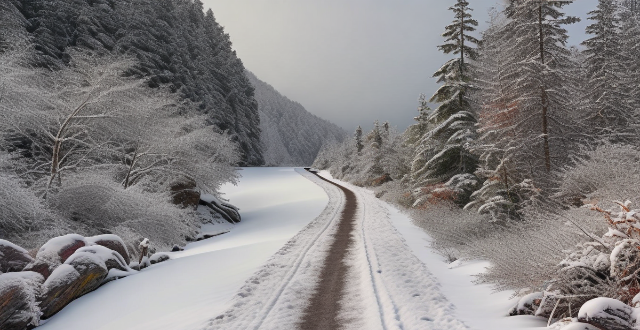
What are the best times of year to visit popular photography locations ?
This guide discusses the optimal times of year to visit popular photography locations, including Yosemite National Park, Antelope Canyon, and Banff National Park. It highlights the unique features and conditions that make each season ideal for capturing stunning images. By planning trips during these periods, photographers can take advantage of natural phenomena like blooming wildflowers, vibrant autumn foliage, striking light beams, and winter wonderlands to create unforgettable photographs. Factors such as weather patterns, crowd levels, and tour availability should also be considered when planning photography adventures.

What are some must-visit cultural sites around the world ?
Culture is an integral part of our lives, and visiting cultural sites around the world can be a life-changing experience. Here are some must-visit cultural sites that you should consider adding to your travel bucket list: 1. The Great Wall of China 2. Machu Picchu, Peru 3. Angkor Wat, Cambodia 4. Taj Mahal, India 5. Colosseum, Italy

What are the best beaches to visit in Asia ?
Asia is home to some of the most beautiful and diverse beaches in the world. Here are some of the best beaches to visit in Asia: 1. Boracay Island, Philippines 2. Phuket Island, Thailand 3. Bali, Indonesia 4. Koh Samui, Thailand 5. Langkawi, Malaysia 6. Siargao Island, Philippines 7. Nha Trang, Vietnam 8. Hua Hin, Thailand
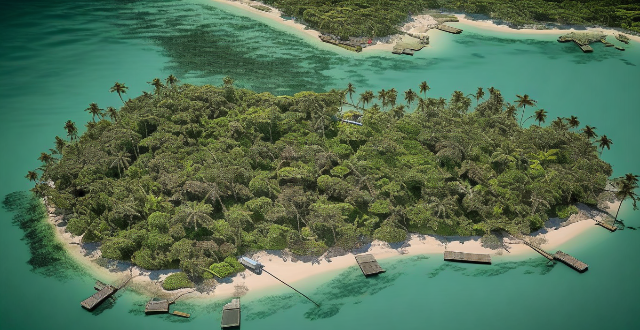
What are some hidden gem island destinations ?
This text highlights several hidden gem island destinations that offer unique experiences and natural beauty without the crowds of more popular tourist spots. The islands discussed include Komodo Island in Indonesia, Nevis in the Caribbean, La Digue in Seychelles, Fjordland in Norway, and Lifou Island in New Caledonia. Each destination provides its own distinct attractions, from diving with marine life and hiking through tropical forests to exploring majestic fjords and experiencing local culture. These islands are perfect for travelers seeking a tranquil escape into nature's splendor and rich cultural heritage.

What are the must-visit destinations forBASE jumping aficionados ?
BASE jumping is an exhilarating extreme sport that involves jumping from fixed objects using a parachute. For those who are passionate about this thrilling activity, there are several destinations around the world that offer unique and breathtaking experiences. Switzerland, Norway, United States, France, and New Zealand are some must-visit places for BASE jumping enthusiasts.

What are the must-visit luxury restaurants when traveling through Italy ?
Italy is renowned for its culinary delights, and a visit to the country would not be complete without experiencing some of its finest dining establishments. Here are some of the must-visit luxury restaurants when traveling through Italy: 1. **Ristorante Savini** - Florence - Tuscan cuisine with elegant decor and a Michelin-starred chef - Recommended dishes: Truffle pasta, Bistecca alla Fiorentina (Florentine steak) 2. **Osteria Francescana** - Modena - Creative Italian cuisine with three Michelin stars - Innovative cooking techniques and artistic presentation - Recommended dishes: Five ages of parmigiano Reggiano, "The Earth" tasting menu 3. **Le Calandre** - Rubano, near Padua - Modern Venetian cuisine with three Michelin stars - Beautiful setting and seafood specialties - Recommended dishes: Eel with beetroot and green apple, ravioli filled with squid ink and sea urchin 4. **Piazza Duomo** - Alba - Piedmontese cuisine with stunning location in the center of Alba - Focus on local ingredients and elegant atmosphere - Recommended dishes: Tajarin pasta with white truffle, roasted suckling pig 5. **Da Vittorio** - Brusaporto, near Bergamo - Lombard cuisine with three Michelin stars - Warm hospitality and creative cuisine - Recommended dishes: Gnocchi with cep mushrooms and black truffle, veal sweetbreads with chanterelles 6. **La Terrazza** - Polignano a Mare - Apulian cuisine with breathtaking views of the Adriatic Sea - Fresh seafood and romantic atmosphere - Recommended dishes: Spaghetti with bottarga and cherry tomatoes, branzino baked in salt crust 7. **Arnolfo** - Milan - Contemporary Italian cuisine with two Michelin stars - Innovative flavors and sleek design - Recommended dishes: Artichoke and black truffle soup, venison with chestnuts and chocolate 8. **Enoteca Pinchiorri** - Florence - Fine wine and food pairings with three Michelin stars - Extensive wine list and gourmet tasting menus - Recommended dishes: Foie gras with balsamic vinegar gelato, risotto with Amarone wine and ossobuco 9. **La Torre del Saracino** - Castagneto Carducci, near Bologna - Emilia-Romagna cuisine with one Michelin star - Historic setting in a medieval tower and regional specialties - Recommended dishes: Tortellini in brodo, rabbit stuffed with herbs and lemon 10. **San Domenico** - Imola - Creative Italian cuisine with one Michelin star - Beautiful countryside setting and seasonal menus - Recommended dishes: Roasted octopus with potatoes and bones, fennel pollen and orange salad When visiting these luxury restaurants, it's always a good idea to make reservations in advance and dress appropriately for the upscale dining experience. Enjoy your culinary journey through Italy!

What are the must-visit family-friendly attractions around the world ?
Traveling with family is an amazing experience that creates lasting memories. Here are some of the must-visit family-friendly attractions around the world: 1. Disneyland Paris, France 2. Universal Studios Hollywood, USA 3. Tokyo DisneySea, Japan 4. Legoland Deutschland, Germany 5. LEGOLAND Florida Resort, USA 6. Efteling, Netherlands